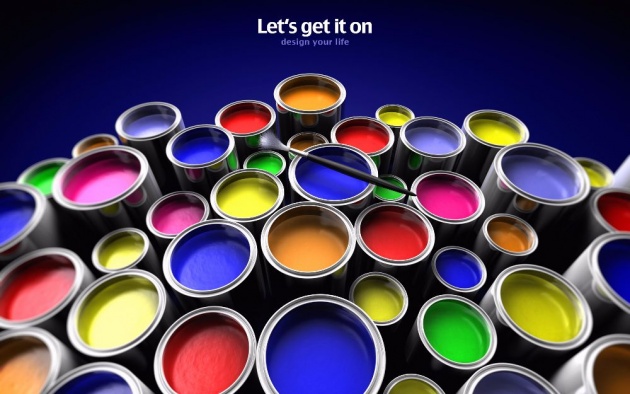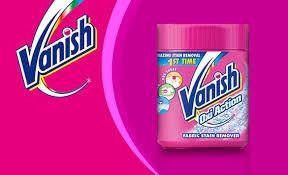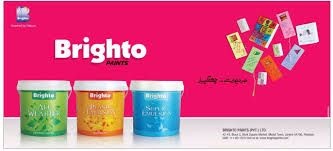Hi, I am back with a new topic related with my personal experience. The last topic about chemistry I had posted was much liked by members of bitlanders. So I decided to write again something related to chemistry.
Last week, our college organized a trip for students to a chemical industry. All the students were so excited about this trip. The decision of selecting the chemical industry was on chemistry teacher and that’s me. So I decided with the advices of my student to go to the paint industry. There are so many paint industries in Pakistan so we had to select one of them, and we selected the “Brighto Paints private limited” and forwarded this selection to the college management. The management sent letter to the industry for permission. After 3 days their reply came for visiting the industry and the industry selected Thursday for the trip. Students were very happy when they heard the news of trip and started their preparations.

image source: image is taken by myself
On Thursday, we left our college early in the morning and reached our destination in the evening. It was a long journey. All the students were exhausted. When we arrived there the manager of industry itself was there for our welcome. He took us to the hostel and had a few words with the students. We slept early, because everyone was very tired and they had to visit the industry next day.
Next day, we went to the industry and a warm welcome was provided by the staff of the industry. The manager took us to a hall and gave us a brief explanation about the industry. They served us with a heavy breakfast. After breakfast, they provided us two chemical engineers who took us to visit the industry. They explained everything very clearly. The entire student noted the whole lecture and process of making the paint, varnish and distemper including me.

image source: google.com
Now, I will discuss the entire related thing to paint, varnish and distemper in my own words.
WHAT IS PAINT?
Paint is a protective or decorative coating on some suitable surface. These are the mixtures of organic and inorganic chemicals. Paint is defined as liquid material when applied to surface forms a hard, continuous film for protection and decoration.
OR
Paint is a chemical mixture or viscous suspension which when applied as a thin film; it forms a tough protective coating by the process of condensation or polymerization.
OR
Paint is a pigmented liquid, which is converted into an opaque solid film of desired color after application as a thin layer.
Paints are used for protection against corrosion, seasonal affects and beauty. Usually paints increase the life of an object by isolating it from the environment.
1. Water based paints
2. Oil based paints
Water based paints:
In these paints water is used as thinner. For example white wash, distemper etc
Oil based paints:
In these paints and organic solvent like turpentine or alcohol is used as thinner. For example synthetic enamel, under coat etc.

image source: Google.com
Composition of paint:
The constituents of paint are determined by the purpose for which the film is applied and the nature of the film to be painted. Following are basic constituents of most paints:
1. Thinner
2. Body
3. Extender or filler
4. Pigment
5. Drying agents
6. Plasticizers
7. Anti-skinning agents
1. Thinner:
Thinner or solvents are organic in nature and are used to reduce the viscosity of the paints to make their flow easy and to facilitate the drying of the paint. For example turpentine oil, kerosene oil, benzene, mentholated spirit and naphthalene etc.
2. Body:
The body of paints comprises drying oil. These are used for the formation of films in paints. Drying oils are fatty acids of vegetable origin. For example linseed oil, dehydrated castor oil, cottonseed oil, soybean oil, Tung oil, coconut oil and china wood oil etc. These oils furnish a medium. Adhesion, toughness, durability and film forming property, resistance to water and dry by the direct absorption of oxygen from the air by the process of condensation, polymerization or evaporation.
3. Extender or filler:
These are used to increase the volume of the paint and to improve the mechanical properties like durability etc of the paints. Fillers have low refractive index and are white in color. For example common fillers are talc, gypsum, silica, carbonates of barium and calcium, and Sulphates of magnesium, calcium and barium.
4. Pigment:
It is the essential part of the paint that makes the paint beautiful by providing it colors. Theses may be organic or inorganic in nature. These should be non-toxic., chemically inert and miscible with the paint. It is used in brilliant white paints.
5. Drying agents:
These are also called driers and help in the early drying and hardening of the paint film by the process of oxidation, polymerization, condensation or precipitation etc. their percentage varies with the type of the paint from 1-12%. For example ZnO, cobalt and lead nepthalates are common driers.
6. Plasticizers:
These are used to impart special characteristics to the paints like flexibility, elasticity and to minimize the cracking of the paint film. For example Dibutyle tartarate, triphenyl phosphate, tributyl phalate etc are common plasticizers.
7. Anti-skinning agents:
These are used to prevent the skinning and peeling off of the paint film. For example poly hydroxyl phenols etc.
HOW THE PAINT IS MANUFACTURED?
The main step involved in the manufacture of paints are the grinding, mixing and packing etc. generally four-story building is used in the manufacture of paints. The materials like drying oils, thinners, pigments, driers etc are stored in the 4th floor. These are mixed together in the desired proportion and are grinded thoroughly at the 3rd floor. These grinded components are sent to the storage tanks in the 2nd floor that are equipped with the agitators. Here other chemicals like plasticizers, thinner etc are also added as per need. Now this paint is sent to the 1st floor where these are packed and are sent to the market. The flow sheet diagram for the manufacture of paints is as follows.

image source: self( my students)
WHAT ARE THE USES OF PAINTS?
USES OF PAINTS:
Following are the major uses of paints.
1. The major use of paints is the protection of metallic objects from atmosphere i.e. corrosion.
2. These are used to make a surface smooth and glossy.
3. To hide the defects of an object wood or iron by making it colorful and beautiful.
4. To protect wood from termites etc.
5. They have a number of industrial and domestic applications.
After collecting this information, we left the paints section and headed toward the varnish section. They briefed us very clearly about everything. Now let see what is varnish and how it is prepared.

image source: self (me standing in front of paint industry plant)
What is varnish?
Varnish:
Varnish is a homogeneous colloidal solution of natural or synthetic resins in an oil or organic solvent. Or it is a colloidal solution or dispersed solution of synthetic or natural resins in oil or thinners. Or it is a transparent or semi-transparent solution of a resinous substance either in linseed oil, turpentine oil or alcohol.
A varnish is the modified form of the paint. But it is different form of the paint in respect that it contains no pigment and is harder and more impervious to moisture than a paint film. Varnishes also dry out by the process of oxidation, polymerization, condensation and/or precipitation etc.

image source: Google.com
WHAT IS THE COMPOSTION OF VARNISHES?
Following are the ingredients of varnishes.
1. Resin
2. Driers
3. Solvents
4. Drying oils
1. Resins:
Resins are the high molecular weight organic compounds, which softens at high temperature. These are used in place of pigments as in paints. These are more resistant to chemicals and water. These form more elastic sticky film than paint. These are of two types.
a. Natural resin:
Shellac Capri, rosin copal, and dammar etc are the examples of natural resins.
b. Synthetic resin:
The examples of synthetic or artificial resins are phenol, aldehydes, urea, formaldehyde, melamine, polystyrene, acrylic resin etc.
Rest of the components (driers, solvents, drying oils) is explained above in the composition of paints.
How varnishes are manufactured?
Manufacture of varnish:
The manufacture of varnish is exactly same as to the paint but resins are used instead of pigments.
What are the uses of varnishes?
Following are the uses of varnishes
1. Varnish gives a lustrous and glossy finish and forms a protective coating on the surface of metallic and wooden articles.
2. Varnishes are specially used for the protection and beauty of the wood, as the design and pattern of the wood are visible after its application.
3. Varnishes are used for the coating of papers to make it brilliant and glossy.
4. These are also used for the coating of copper wire to make it insulator.
After visiting the varnishes section, we moved to distemper manufacturing plant. Then they started briefing us about distemper.

image source: Google.com
What is distemper? What are the constituents of it?
Distemper:
Distemper is the water-based paint. It is the modified and improved form of the ordinary white wash.
Constituents of distemper:
Following are the major ingredients of distemper;
1. Base or body
2. Binder
3. Pigment
4. Solvent
1. Base:
The base or body of the distemper consists of refined lime or chalk powder.
2. Binder:
The binders used in the distemper are glue and casein. These make the distemper more sticky and durable.
3. Pigment:
These are water-based colors and are used to make it beautiful.
4. Solvent:
The solvent or the thinner used in the distemper is one and only water because it is a water-based paint.

image source: Google.com
What are the uses of distemper?
The major use of the distemper is to beautify the interior of houses and buildings because these are quite cheaper as compared to paints and emulsions.
Conclusion and remarks:
After this long visit of paint industry, we went back to the conference hall, where they served us with a heavy lunch. I had some conversation with the engineers and their manager about the product and marketing. It was a nice and informative experience for me. After having a long conversation and photo session with engineers and manager, we said good bye to all staff and went back to our hostel.

image source: self ( me having conversation with engineers)

image source: self( group photo)
It was 3 days trip. We still had one day left. Then my students insisted to visit famous places of Lahore. I can’t resist them and next day we visited the entire famous place in Lahore like Shahi qila, Lahore zoo, badshahi masjid, and many more and we enjoyed a lot. Then we left Lahore in the evening and reached home in the morning.
Thank you for reading my experience and please give comments on my blog if it was informative for you.



